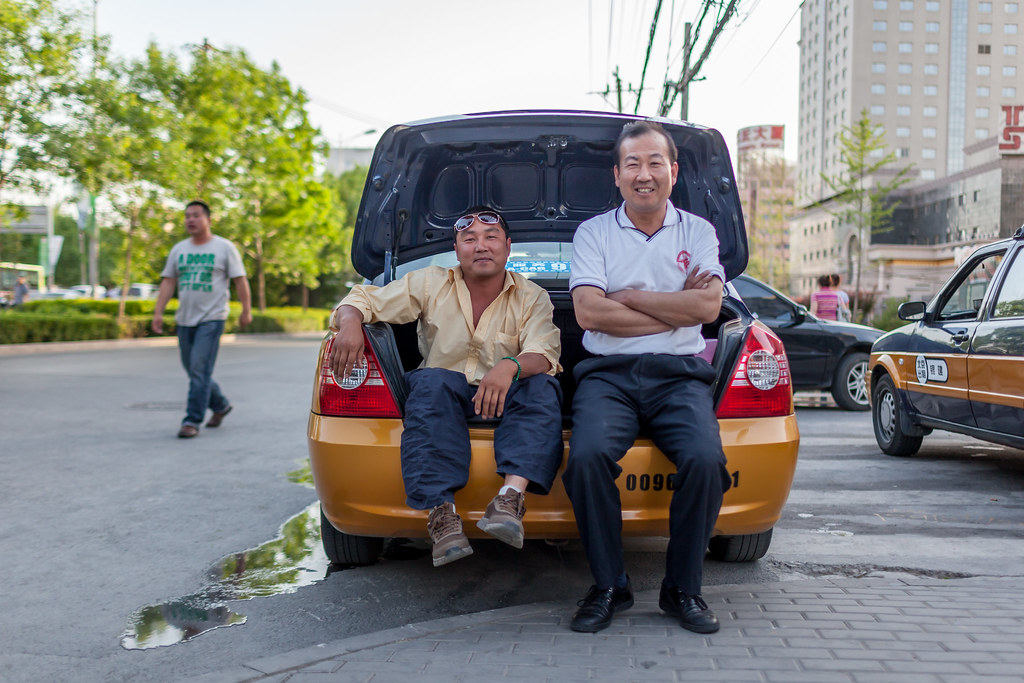Earlier this month, Nikon gave me a chance to try out the Nikon Df, Nikon’s new retro-style full-frame DSLR. The camera itself is beautiful, taking design cues from Nikon's 1970s-era FM film cameras.
Read Morestreet photography
The Former Beijing Stock Exchange
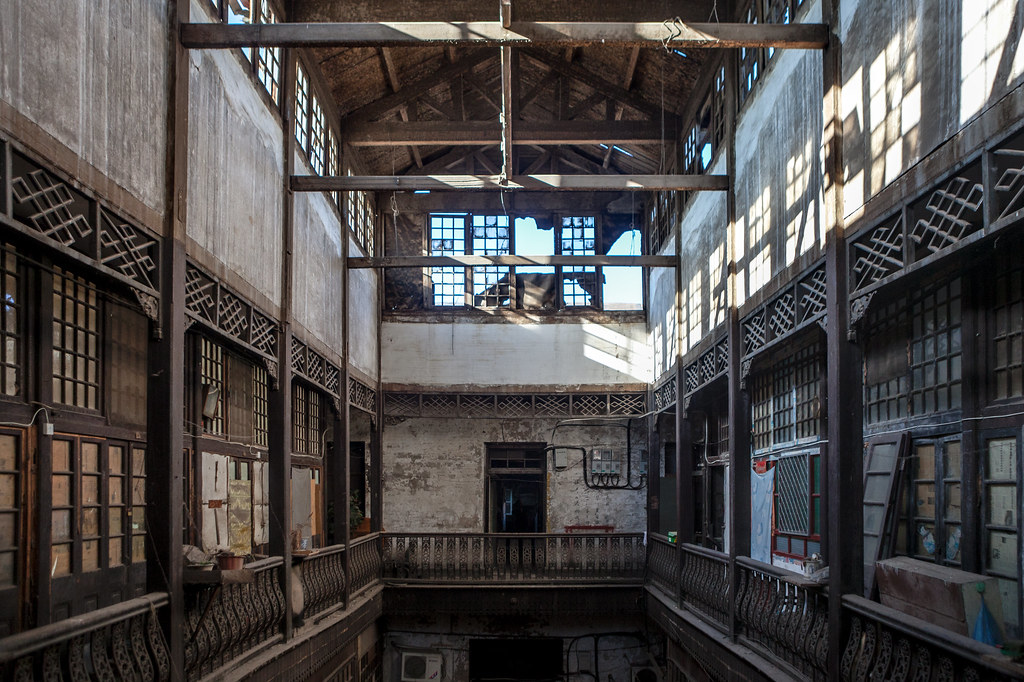
1/400s, f/2.8, ISO 800, 24mm
The former Beijing Stock Exchange (中原证券交易所) at 6.30am on a Sunday. Opened in 1918 and tucked away in an alley behind Qianmen, this was Beijing's first stock exchange. Thanks to Sue Anne for the discovery. If you haven't already, do yourself a favor and follow her stories and pictures at Shanghai Street Stories.
Beijing at Night

1/60s, f/1.2, ISO 3200, 50mm
So I have been trying to settle on a new photography theme. Lately, I haven't had a chance to shoot much during the day, so I've ended up with a lot of evening shots. And most of them have been landscape shots of the citiscape variety. When I lived in New York and Hong Kong, I ended up doing a lot of late night street photography but in Beijing I've found this type of photography more challenging. This is mostly my own fault. Unlike New York and Hong Kong, I no longer have a bustling street at my doorstop. I have lived in Beijing neighborhoods without much street life, and to capture street scenes and portraits, I have had to make it a point to go somewhere and shoot. But I am trying to change that since Beijing has so many parts that are rich with street life, character, and contrasts.
In this post, I have compiled some of my street photography highlights from my time in Beijing. More to come soon...
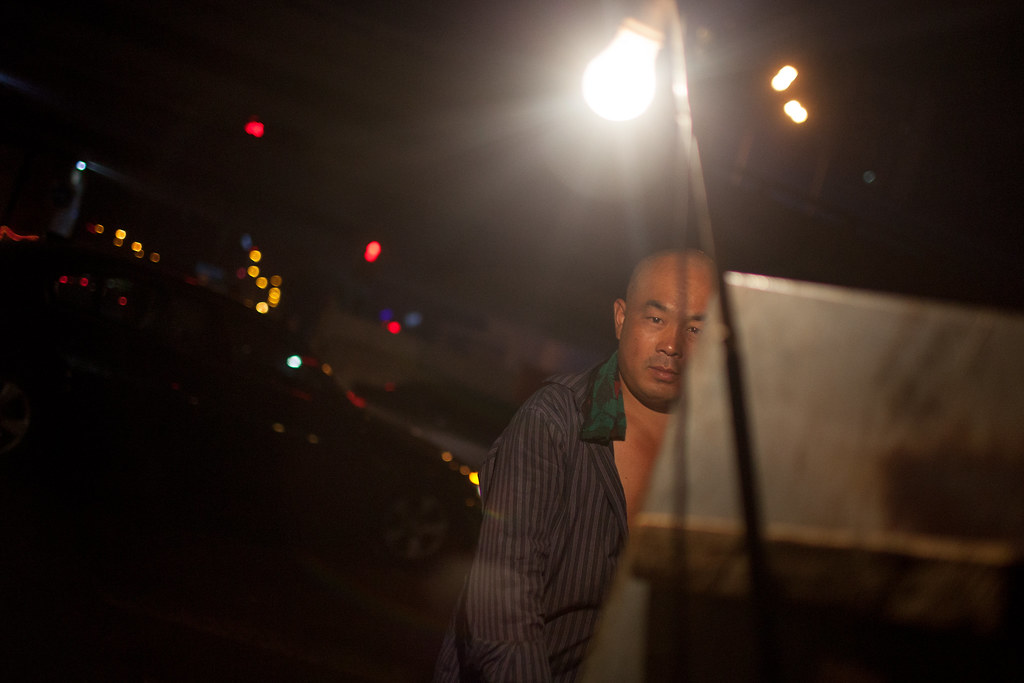
1/800s, f/1.4, ISO 1600, 35mm
More shots below the fold.
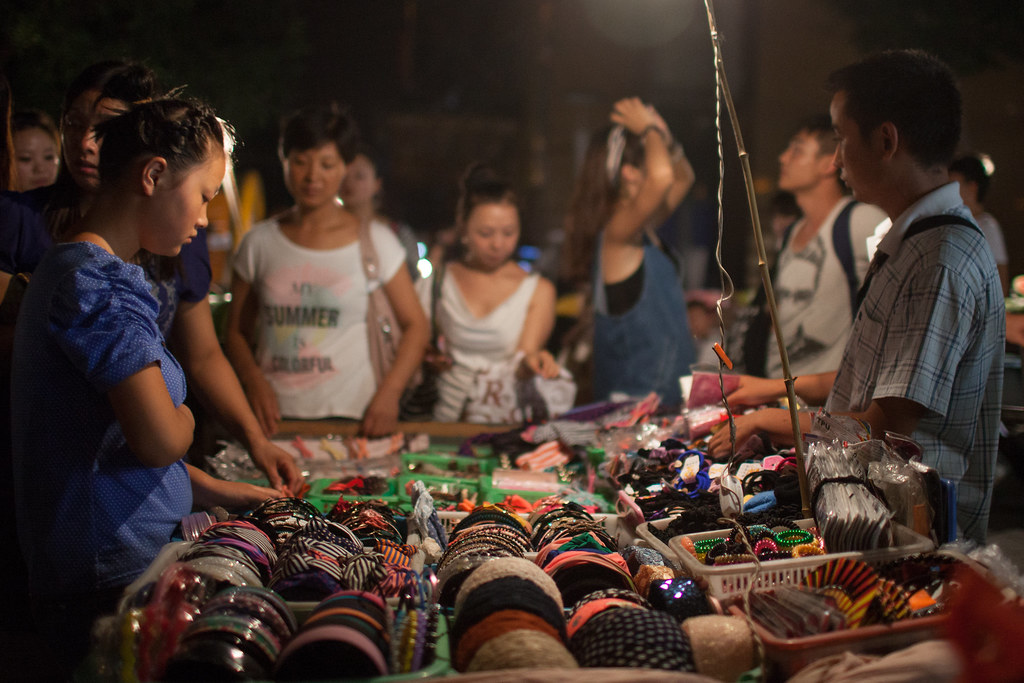
1/400s, f/1.4, ISO 1600, 35mm
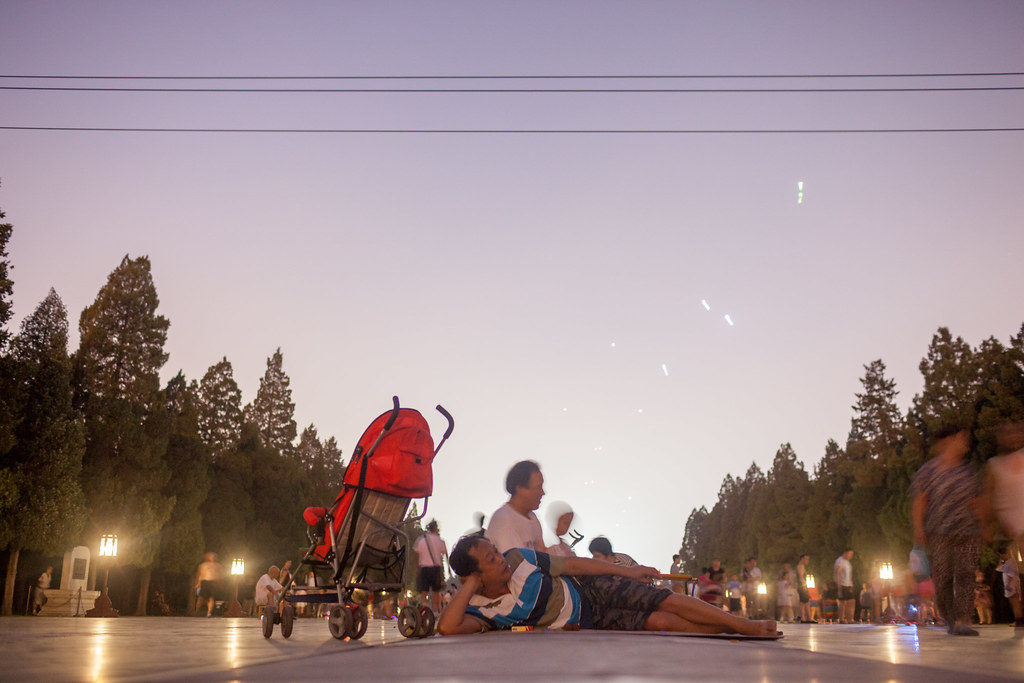
0.6s, f/2.2, ISO 1600, 35mm

1/125s, f/2.0, ISO 1600, 135mm
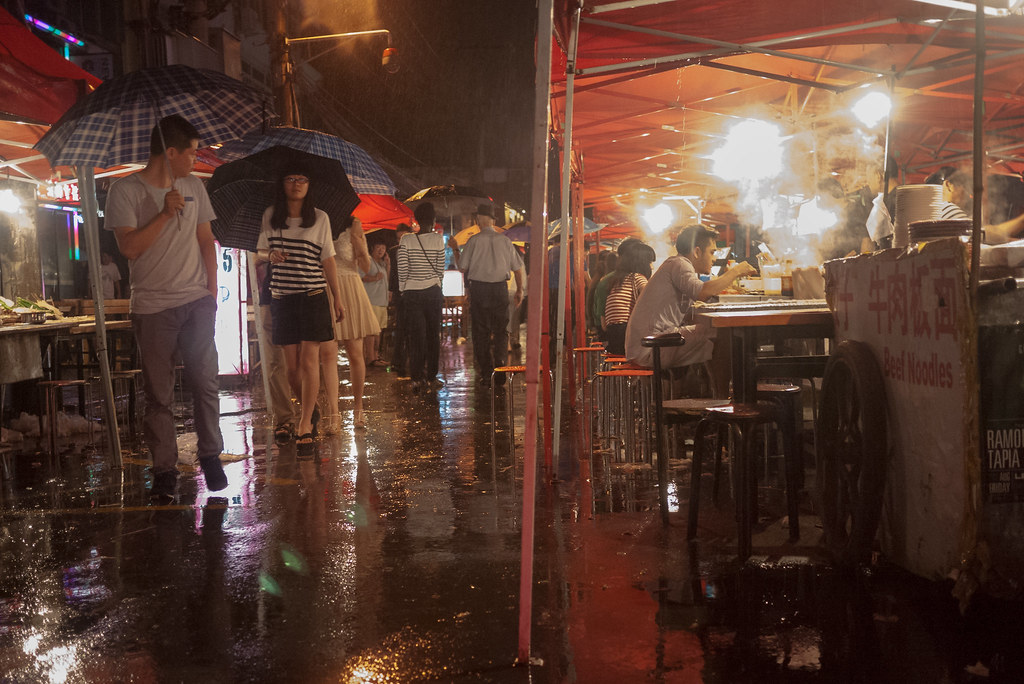
1/80s, f/1.7, ISO 1600, 20mm
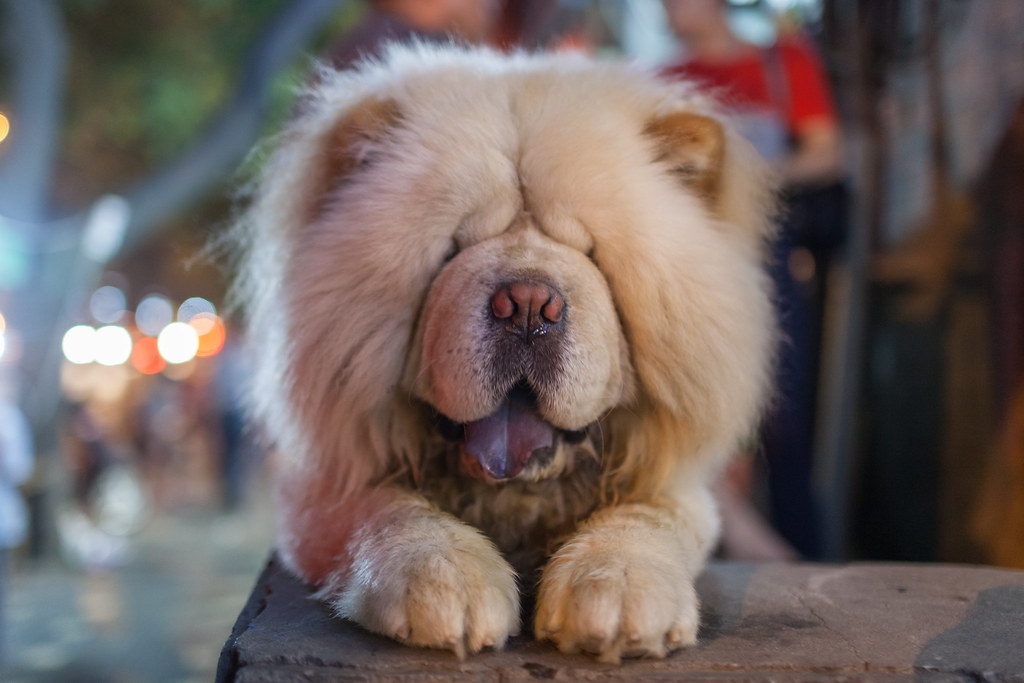
1/50s, f/1.6, ISO 1600, 35mm
Beijing Cabbies
At the Wet Market

1/640s, f/1.8, ISO 800, 50mm
I happened to walk past the wet market around Graham Street near Central in Hong Kong today. It was a rainy, damp day, and luckily I had my camera along. It was late in the afternoon, so the market was busy and the light great.
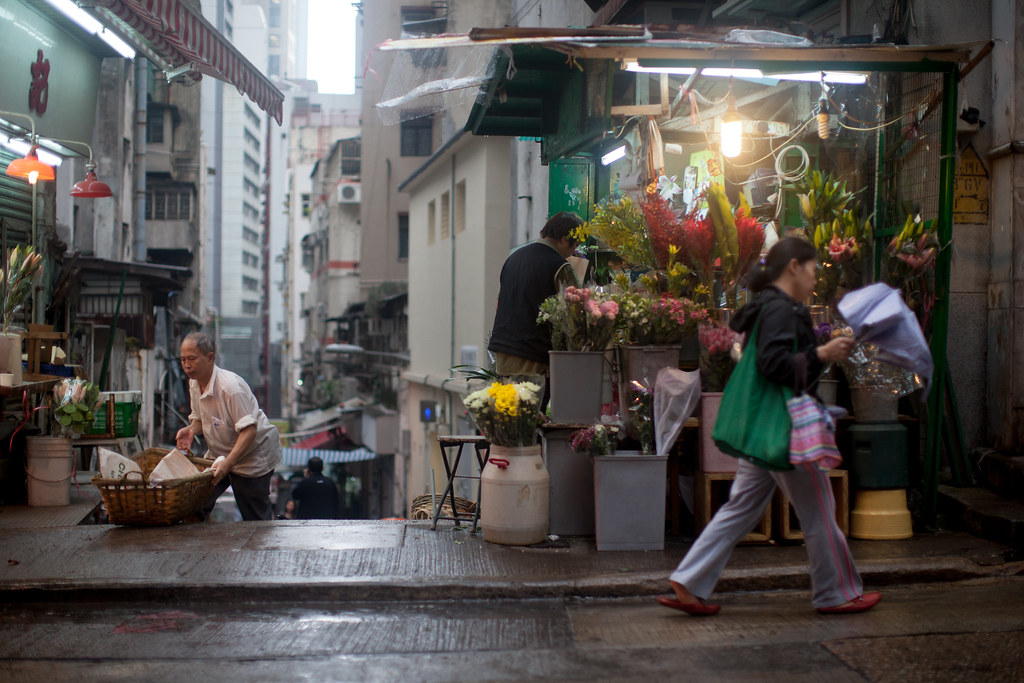
1/800s, f/1.6, ISO 800, 50mm
More shots below the fold.
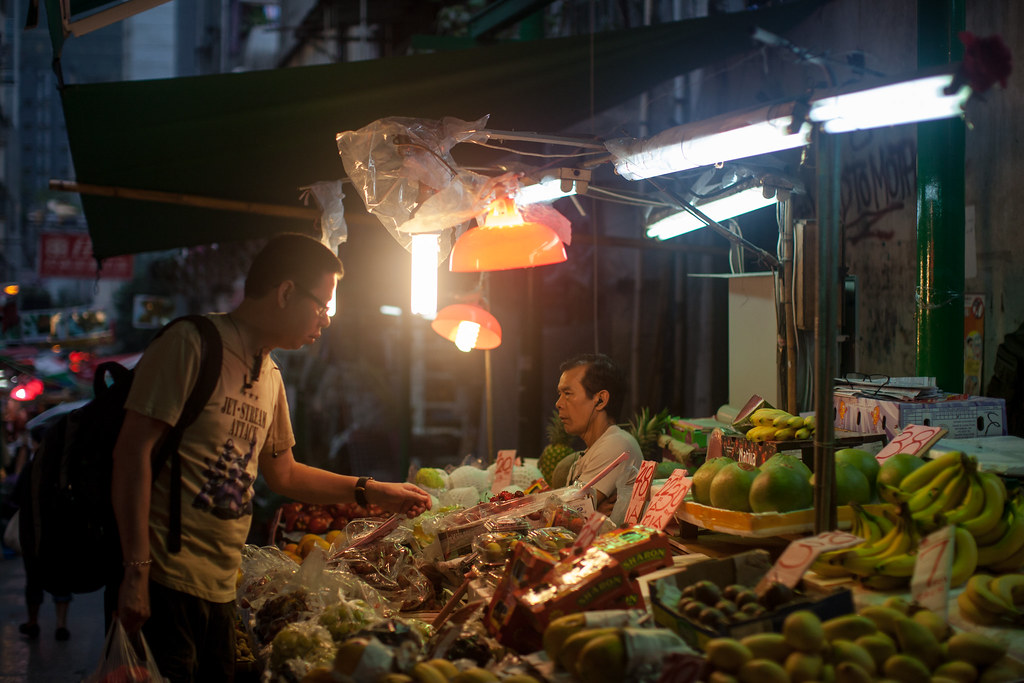
1/1600s, f/1.8, ISO 800, 50mm
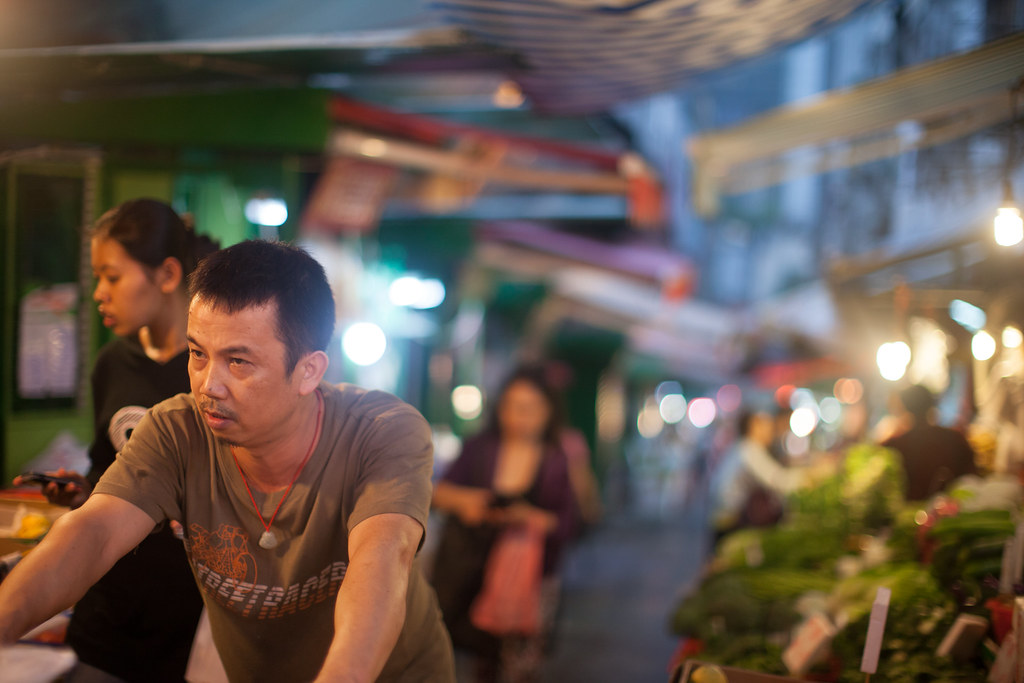
1/250s, f/1.2, ISO 800, 50mm
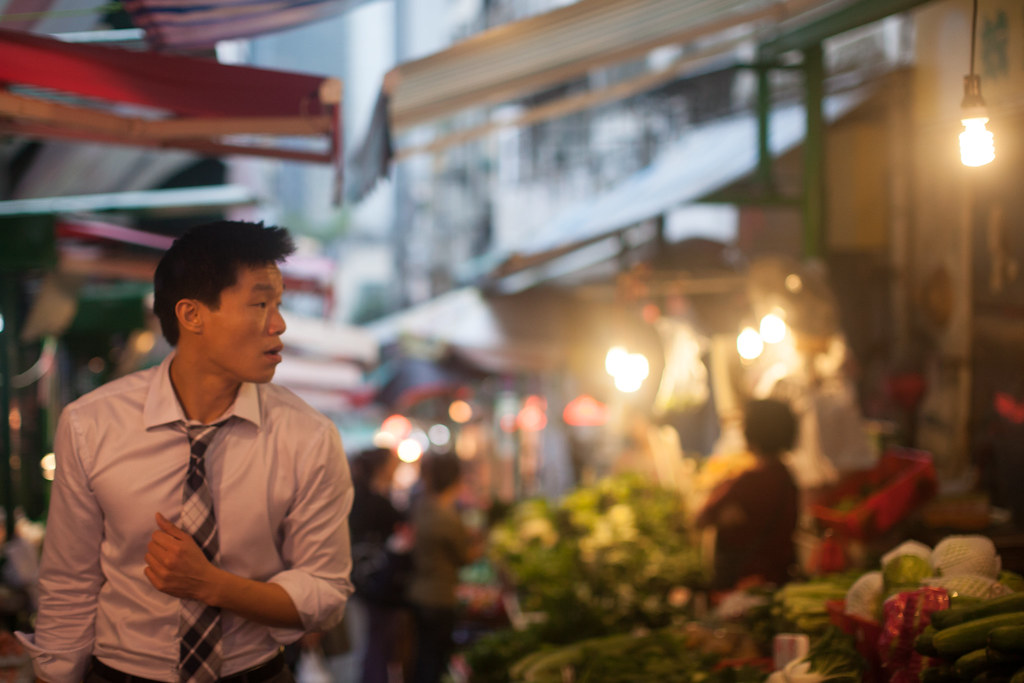
1/400s, f/1.8, ISO 800, 50mm
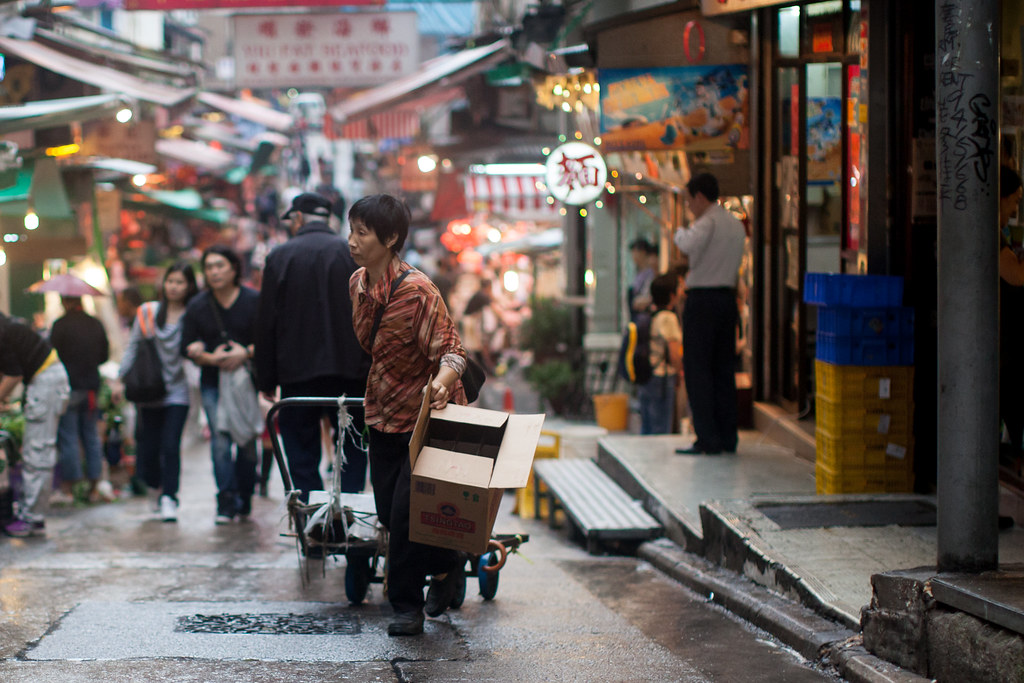
1/1000s, f/1.6, ISO 800, 50mm
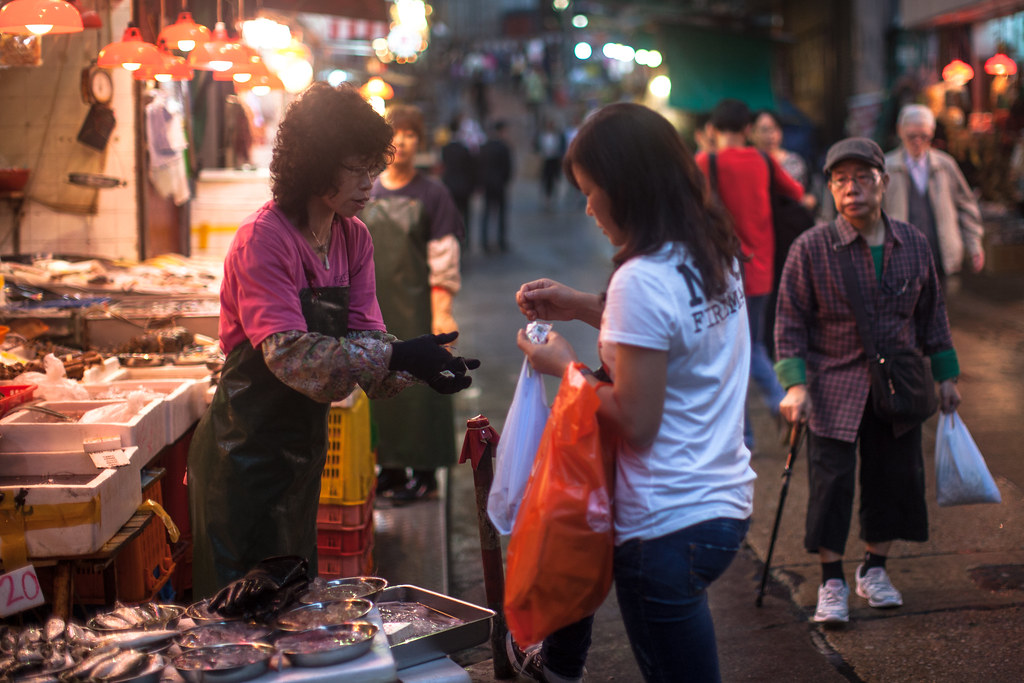
1/500s, f/1.4, ISO 800, 50mm
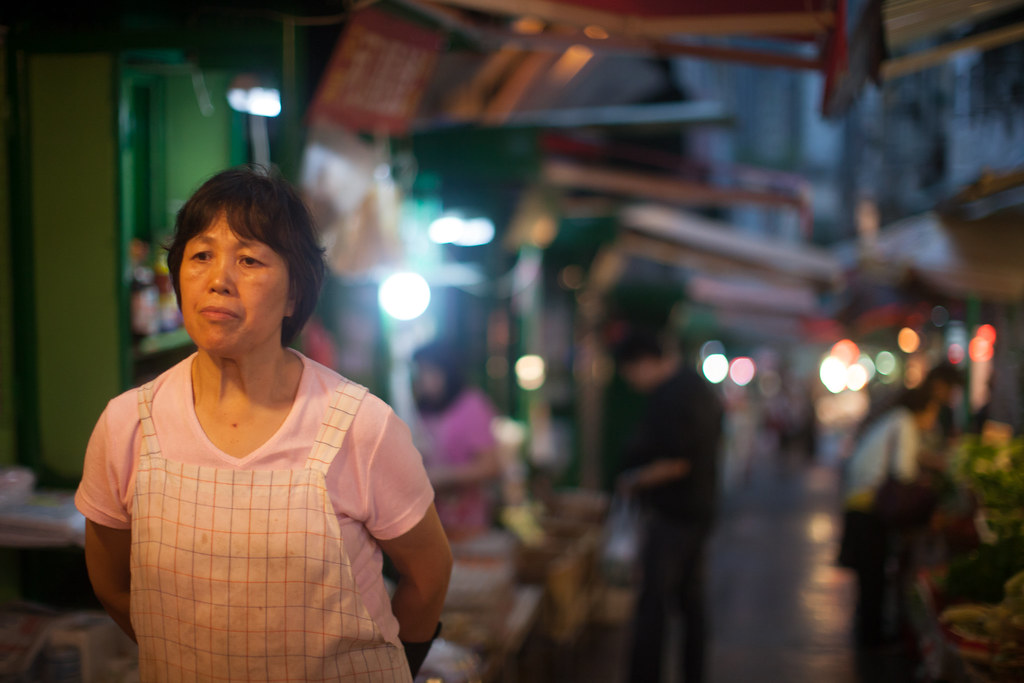
1/500s, f/1.2, ISO 800, 50mm
New York, New York
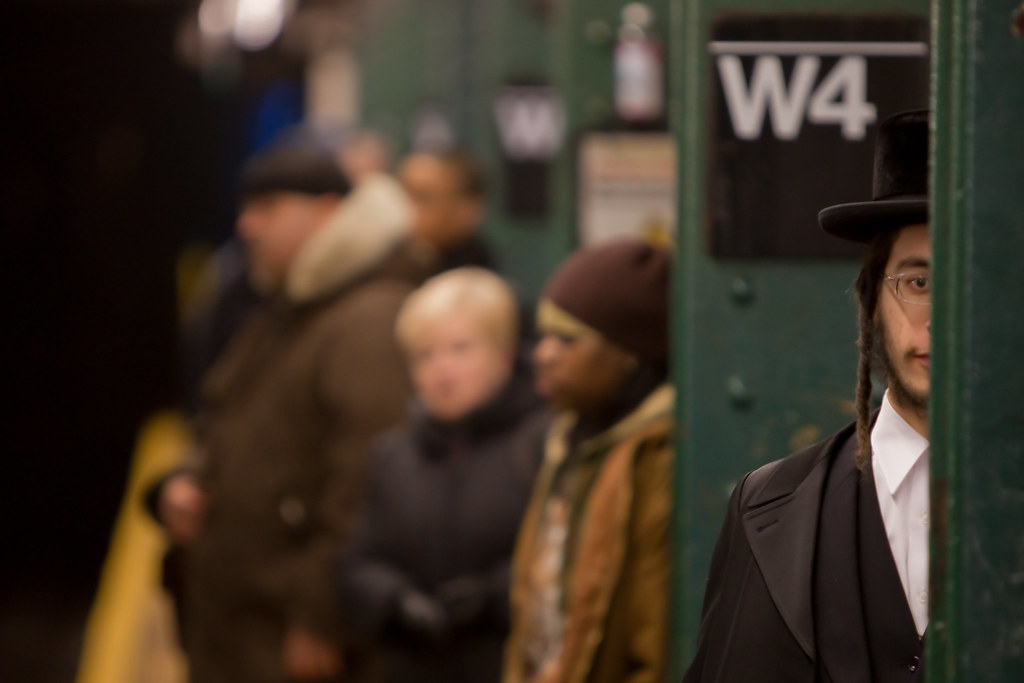
I am submitting some of my NYC shots for a street photography exhibition at the South Street Seaport Museum this year. Amateur and professional photographers are invited to submit up to 12 images. Selecting the shots was a difficult job. Almost all my New York street shots are well over a year old, and I hadn't looked at them in a while. Reviewing my own work was painful. I felt disappointed with a lot of my shots... many of them felt too much like snapshots that failed at telling stories or communicating something interesting about New York and city life.
Most of the photos I ended up with are from the subway. My hope is that they together manage to give some insight into what it feels like to be on (and under) the streets of New York.
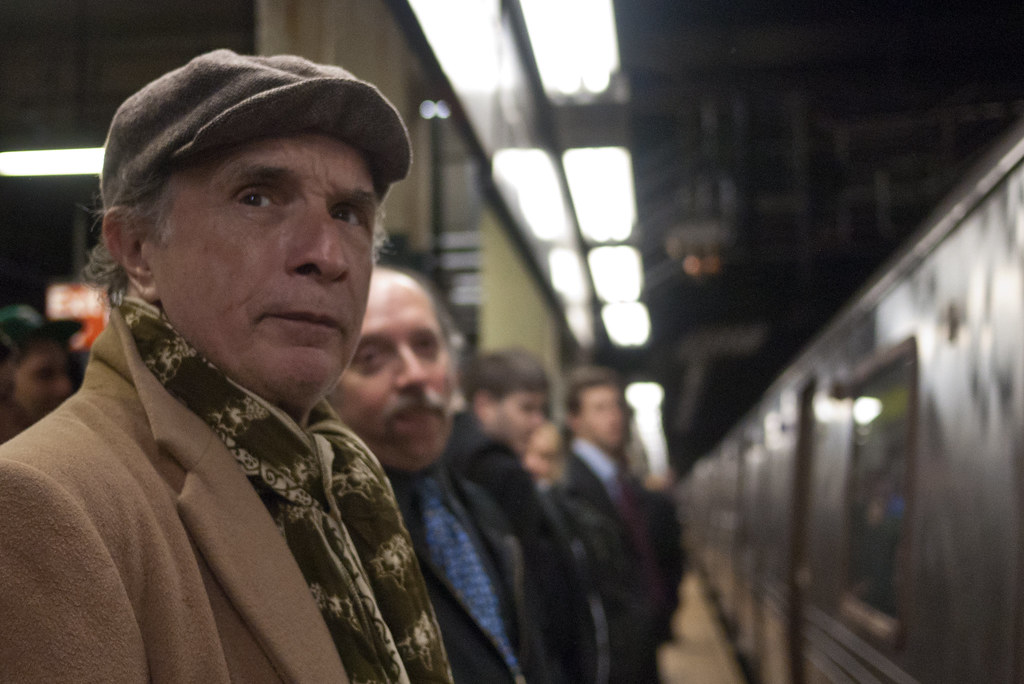
Read on to see the entire submission.


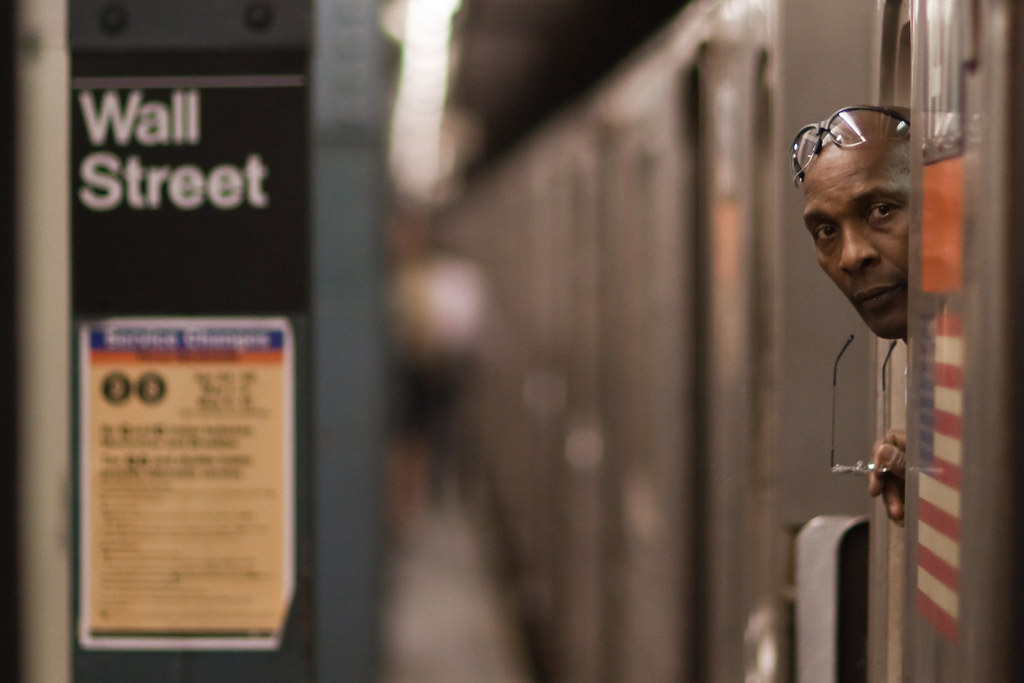
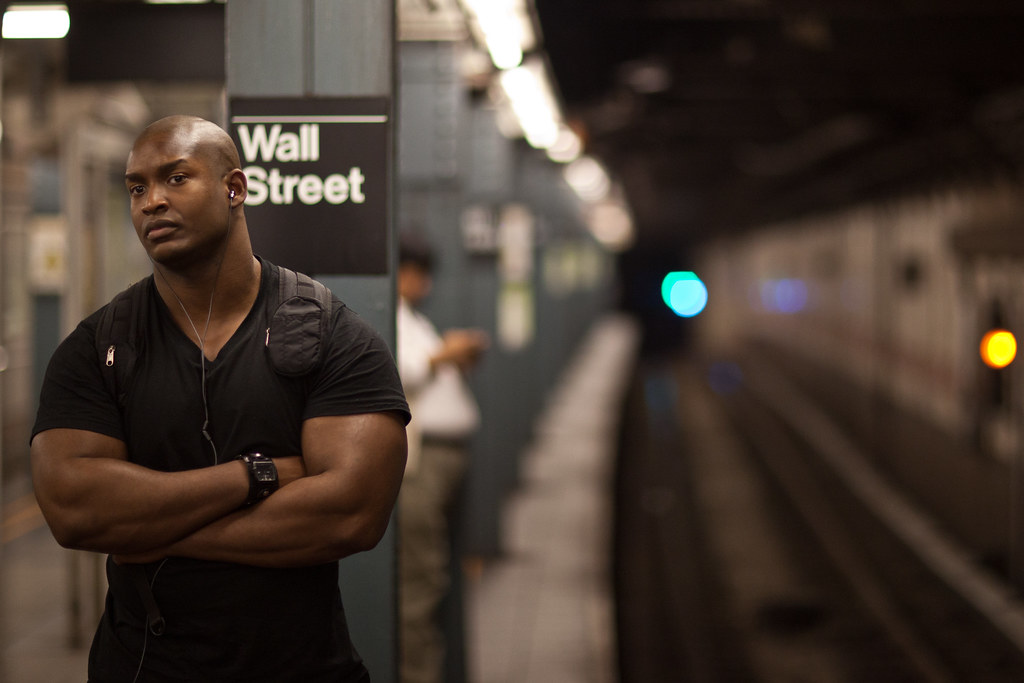
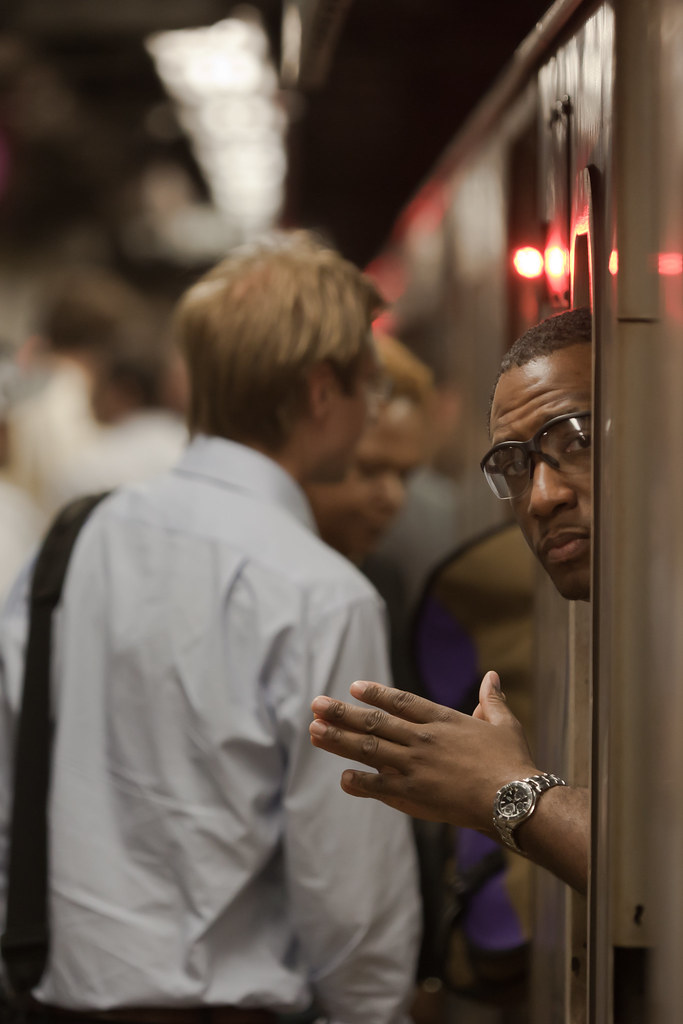
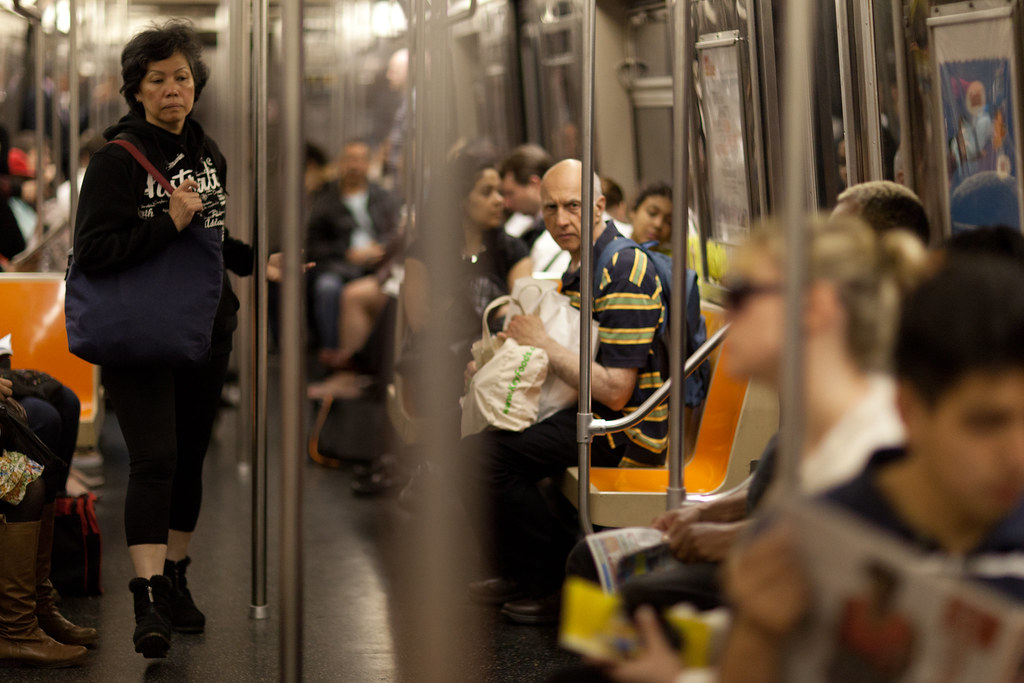
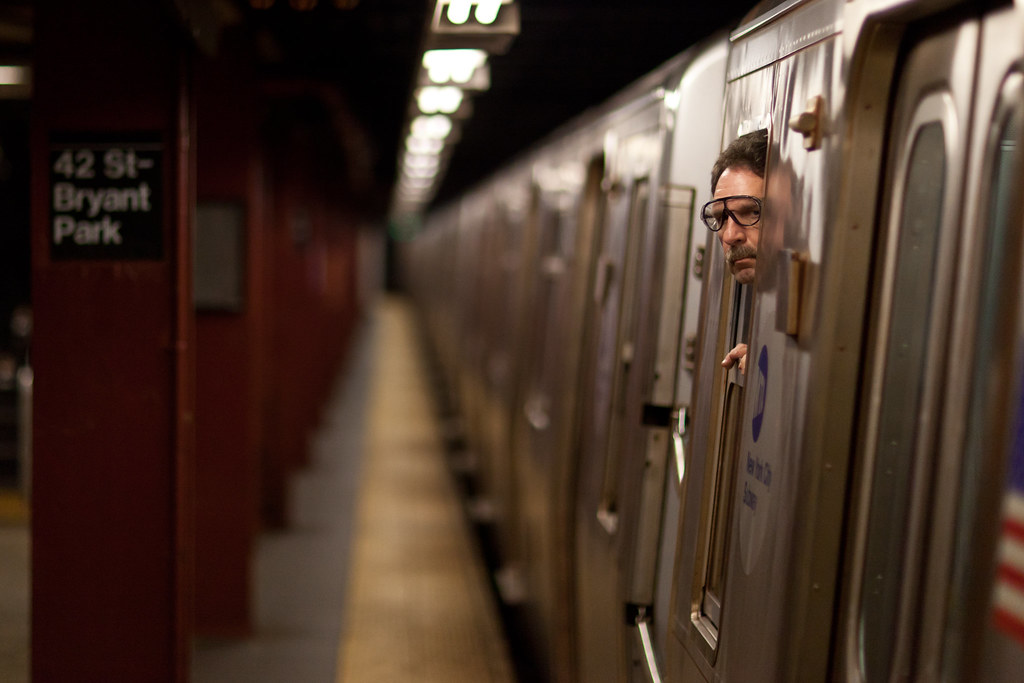
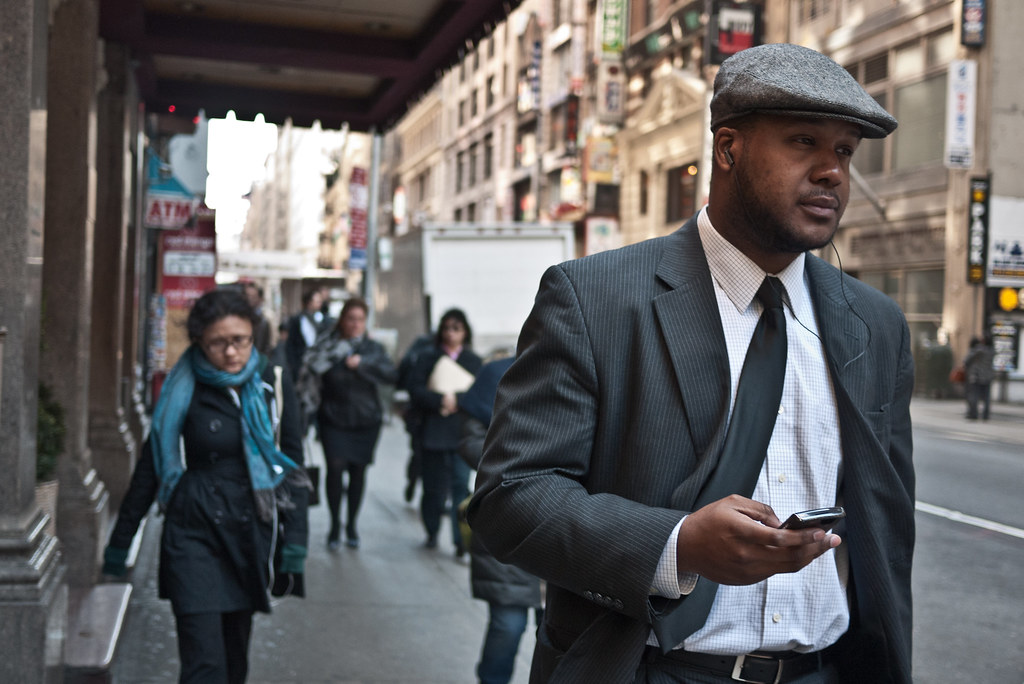

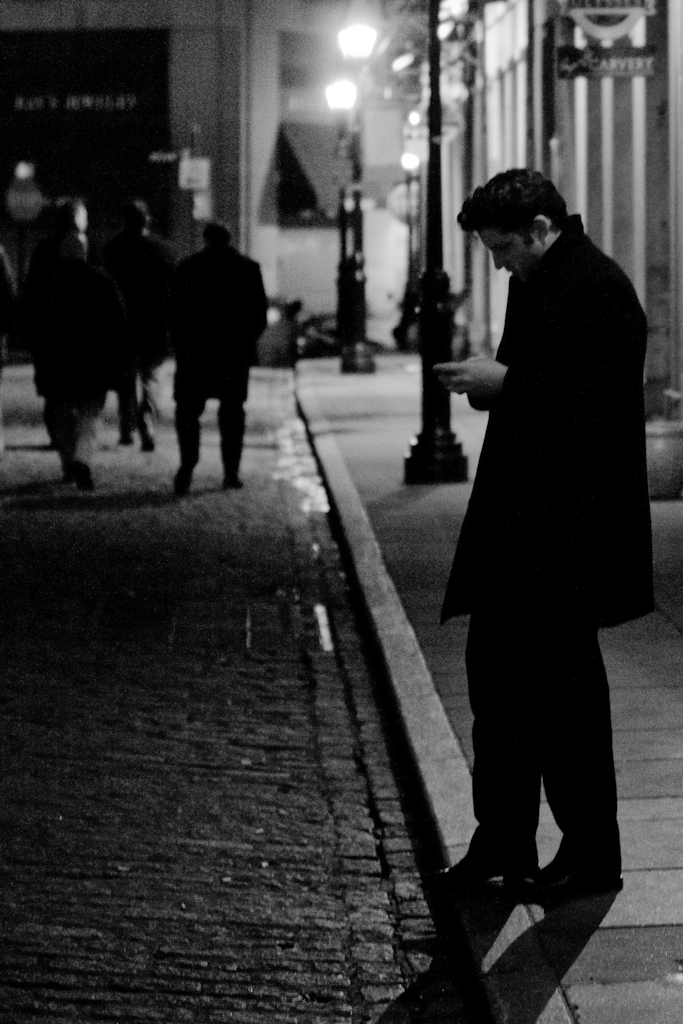
In a Crowded Place
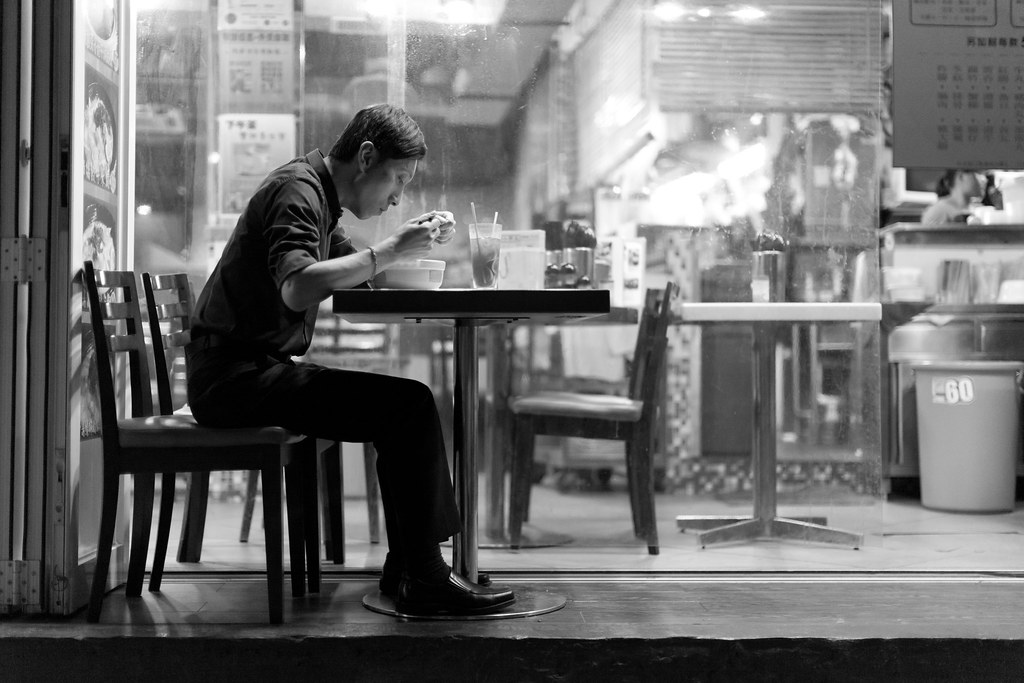
1/500s, f/1.2, ISO 1600, 50mm
This month, I am back in Hong Kong for a few weeks. I've missed the city's grit, its narrow streets, its beat. Beijing is such a sprawling city, and I still haven't figured out what to make of it. As a result, I'm finding it more difficult to capture and portray Beijing adequately in my photos. But Hong Kong is different. Hopefully, I will be able to get in some shots this weekend. (As an aside, I've been meaning to do fewer close-ups and bring in more of the surroundings in my street shots--more on that some other time.)
Being back here, I thought it would be a good time to revisit a brief photo essay I wrote for the spectacular Danish photo magazine, Fotorama (and turn it into English). So without further ado...
I used to live in Hong Kong's Soho neigbohoord. I was one of thousands who each day commute to work on a series of escalators. Endless streams of lawyers, nannies, and tourists gather on a conveyer belt that leads to Hong Kong's financial center. Here, more commuters join as jam-packed busses and underground trains let out floods of people into the city' streets.
Hong Kong's claustrophobic geography has forced the city to expand vertically. With some 7,500 high-rise buildings, it's the world's tallest city. And the Mong Kok neighborhood is the most densely populated on the planet. It's a crowded place.
Despite the intense density, Hong Kong offers its citizens almost total anonymity. The physical closeness does not create any expectations among Hong Kongers that they relate to each other. In fact, it's as if the crowds and the tight physical spaces allow people to create their own personal space.
When I take pictures in Hong Kong, I am often drawn to the moments where people are able to create their own spaces among the crowds--in particular the times when it's not clear if someone wants to be alone or if its the environment that forces the loneliness. Are these people fighting loneliness or the crowds? And then I wonder how many might wonder the same thing about me.
More pictures below the fold.

1/640s, f/2.5, ISO 400, 50mm
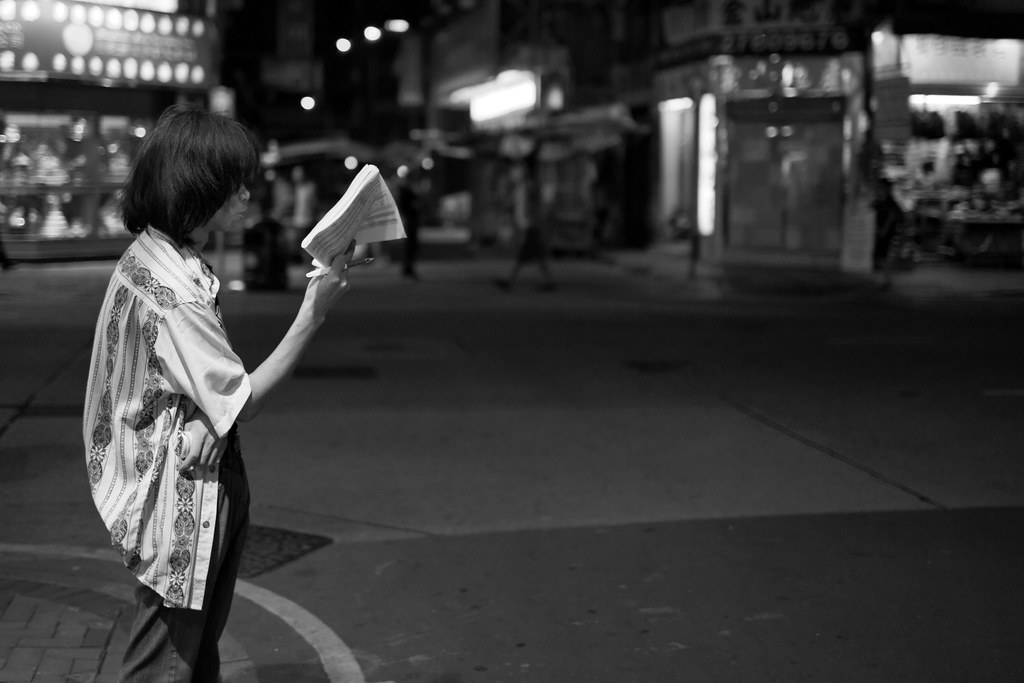
1/640s, f/1.4, ISO 800, 35mm

1/1250s, f/1.2, ISO 100, 50mm

1/8000 secs, f/1.2, ISO 200, 50mm

1/320s, f/1.2, ISO 4000, 50 mm


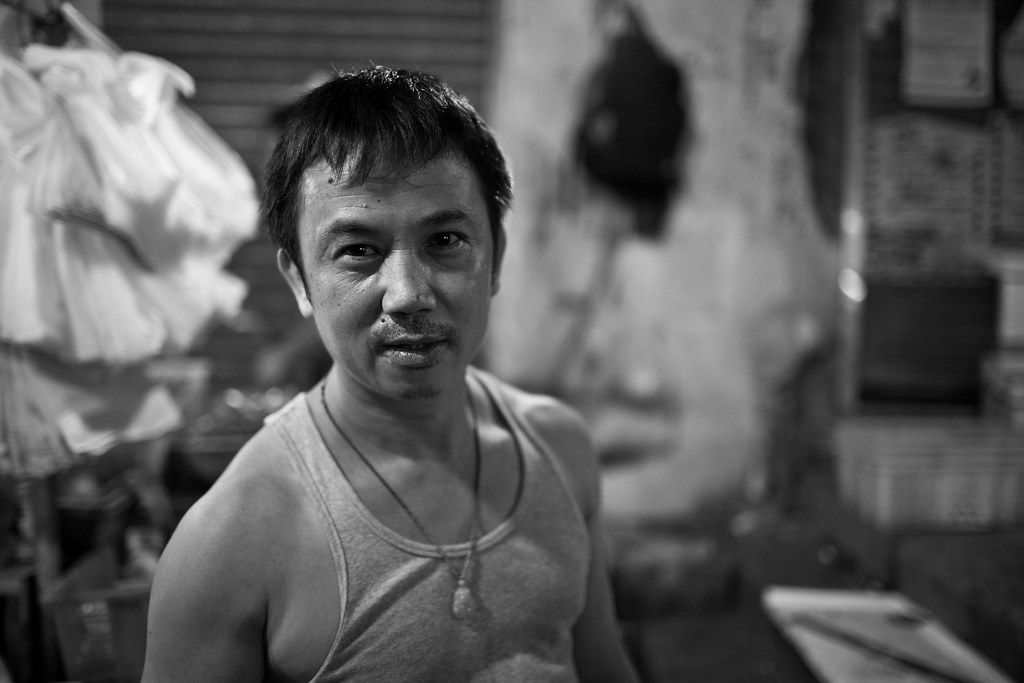
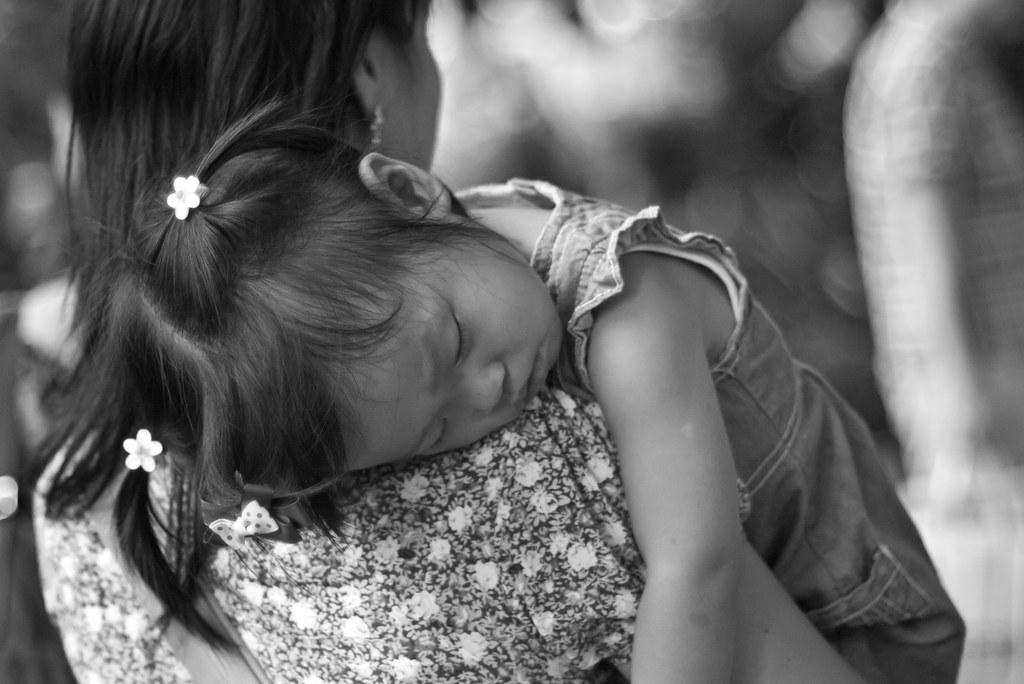

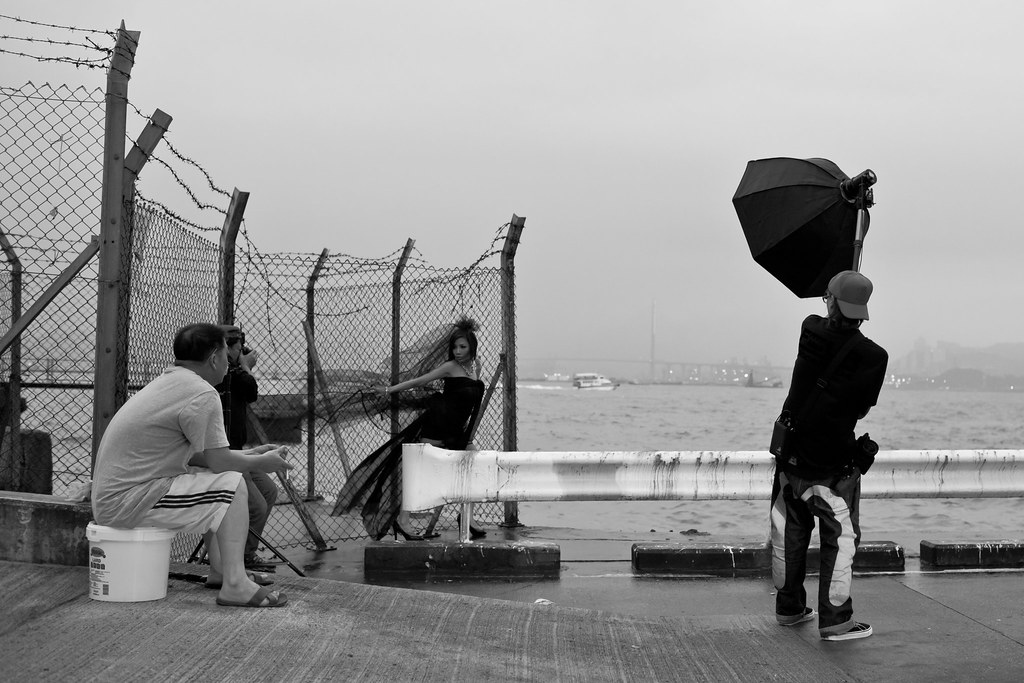
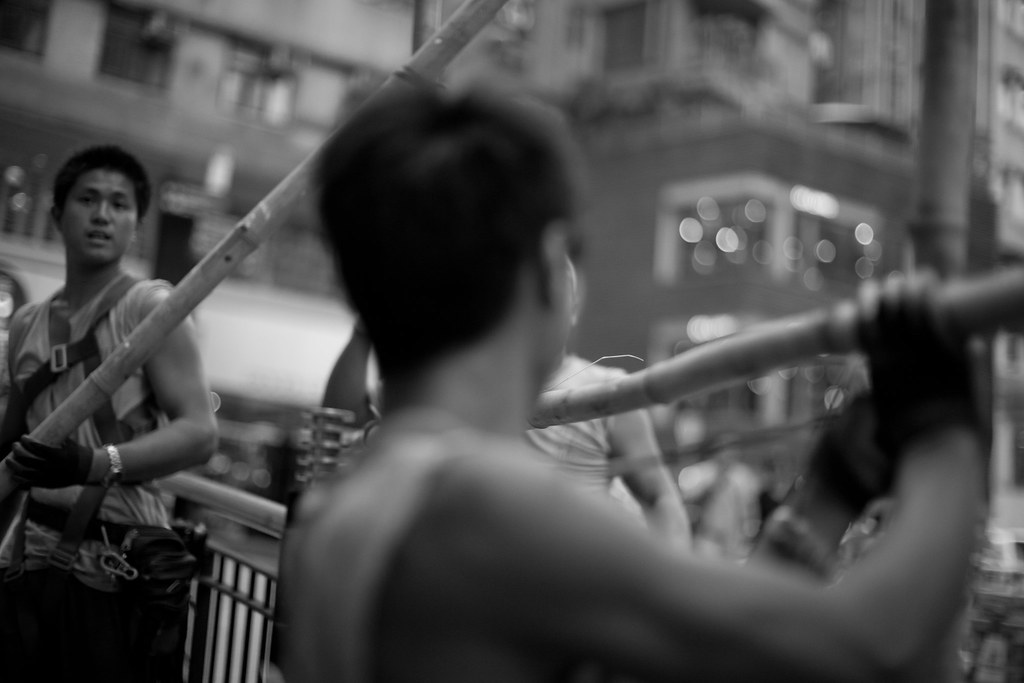
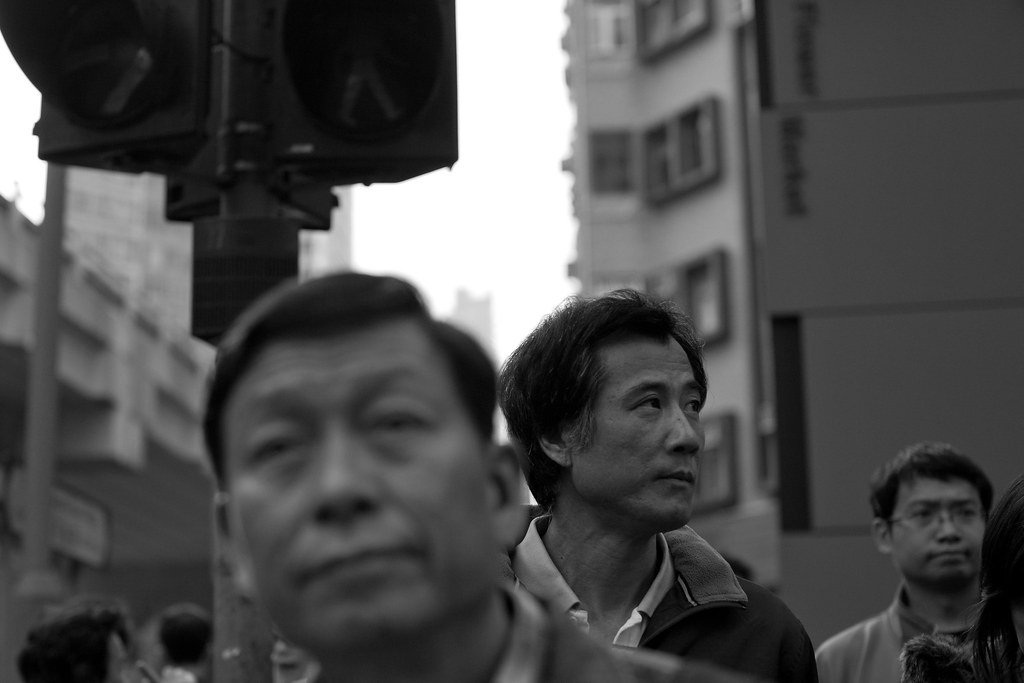
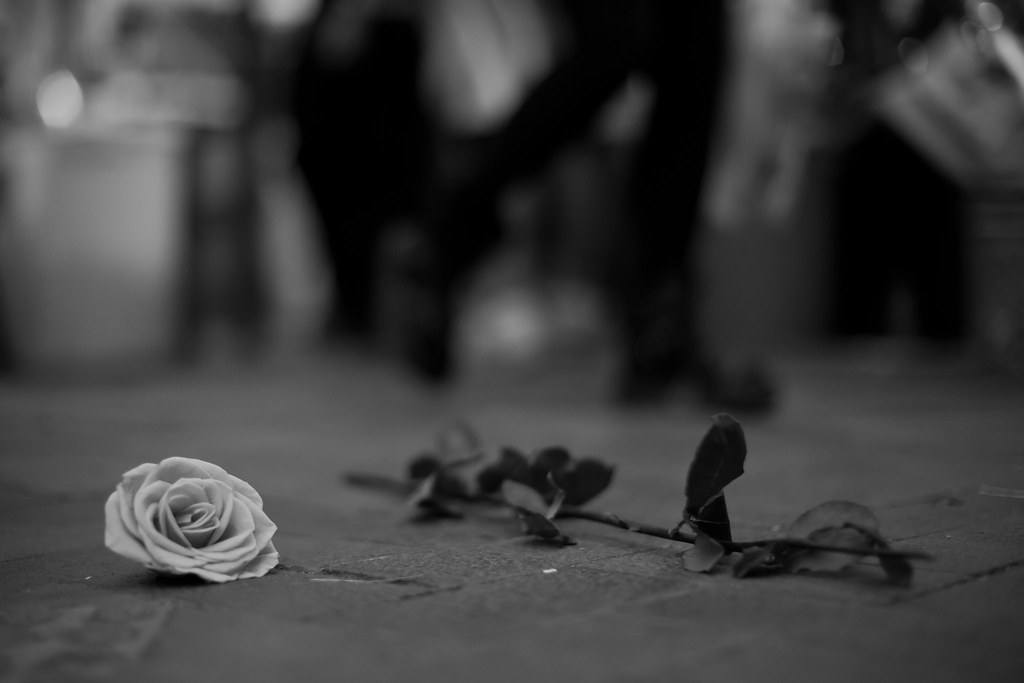
Thoughts on Black and White
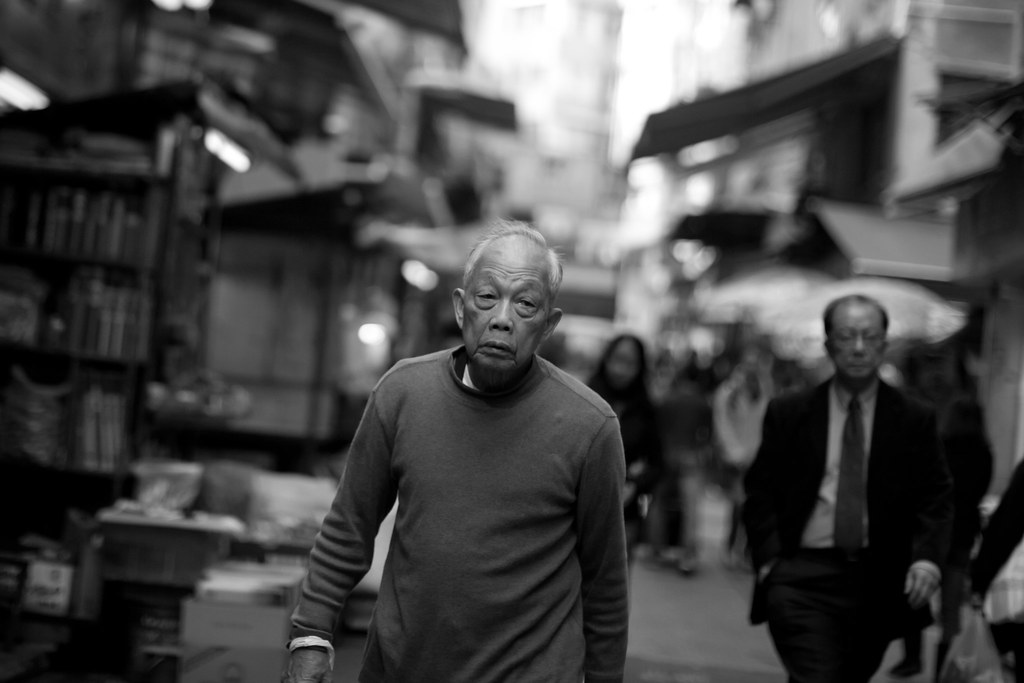
1/4000 secs, f/1.2, ISO 400, 50mm
I often end up processing my street photography in black and white. Especially when the composition is centered around a person or is an outright portrait, I find that subjects are likely to be more intense and dramatic in black and white and that the lack of color can make expressions stand out. Besides, with Hong Kong's colorful streets, black and white processing can make other parts of the scene less distracting. And when shooting at high ISO values or when the focus is not spot on, black and white tones tend to be more forgiving. Of course, it's also a subjective call: sometimes a photo just looks better to me without colors.
I have collected a few more recent black and white shots from Hong Kong below the fold. For a fullscreen slideshow of my collection of black and white Hong Kong photos see this set on flickr.

1/6400 secs, f/1.2, ISO 400, 50mm
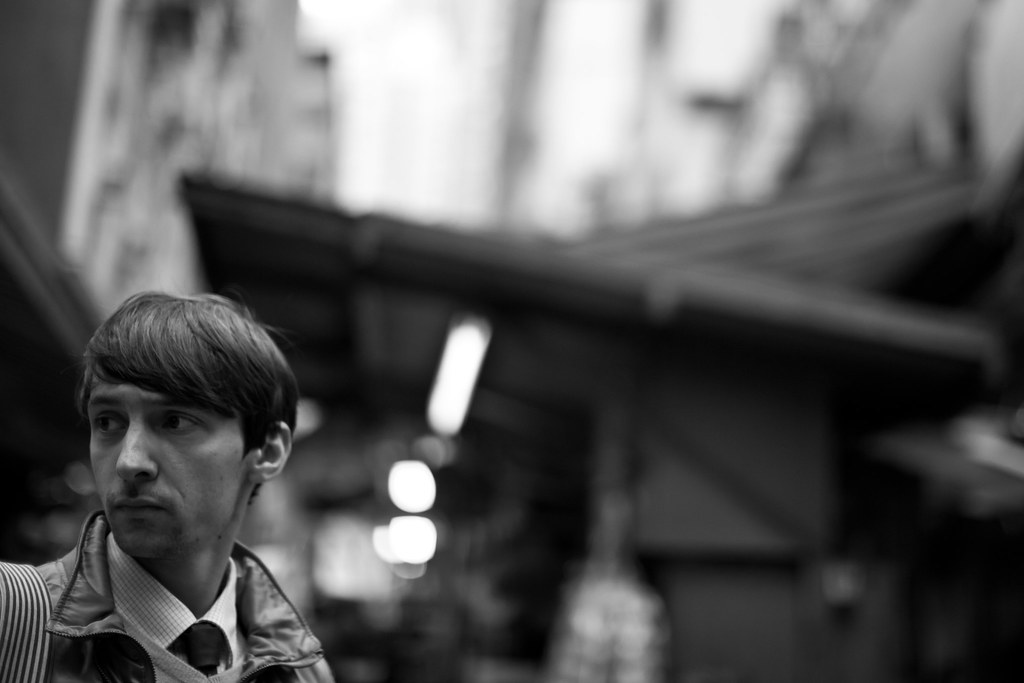
1/2500 secs, f/1.2, ISO 800, 50mm

1/250s, f/1.4, ISO 1600, 35mm

1/200s, f/2.8, ISO 1000, 35mm

1/8000 secs, f/1.2, ISO 200, 50mm
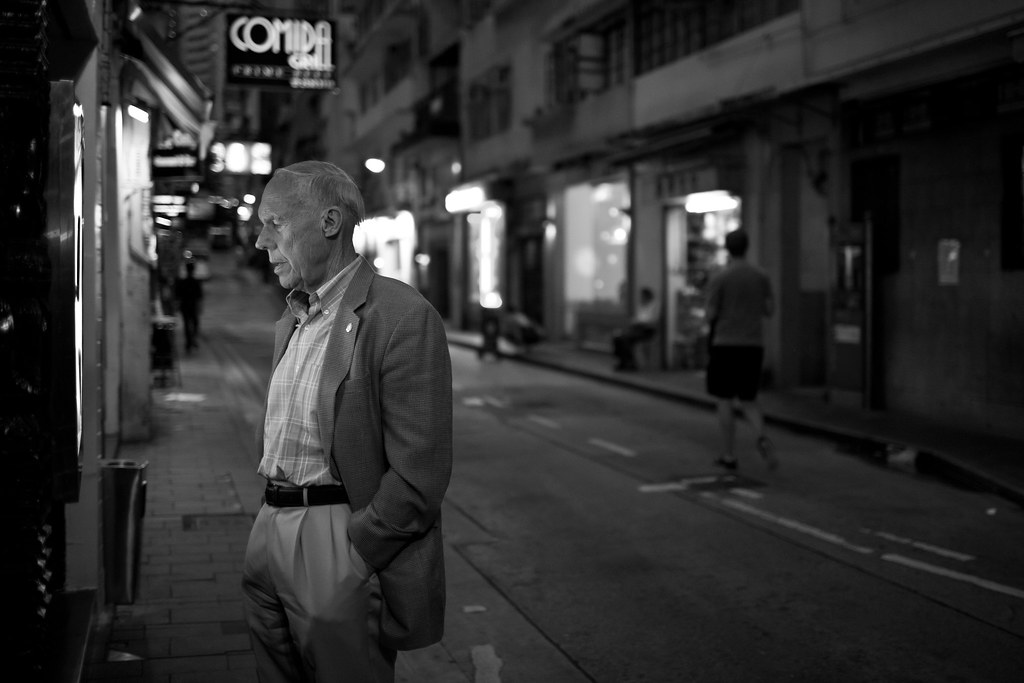
1/500s, f/1.4, ISO 1600, 35mm

1/1250s, f/1.2, ISO 1600, 50mm
On the Streets of Mongkok

1/2000s, f/2.8, ISO 400, 50mm
I've been spending some time lately shooting street scenes using manual focus. I pre-focus the camera to somewhere around two meters and chose a relatively forgiving aperture (usually something like f/2.8, which still generates a fairly narrow focal plane). It's great for street photography since it's less obtrusive and allows you to compose the image without raising the camera.
Roots
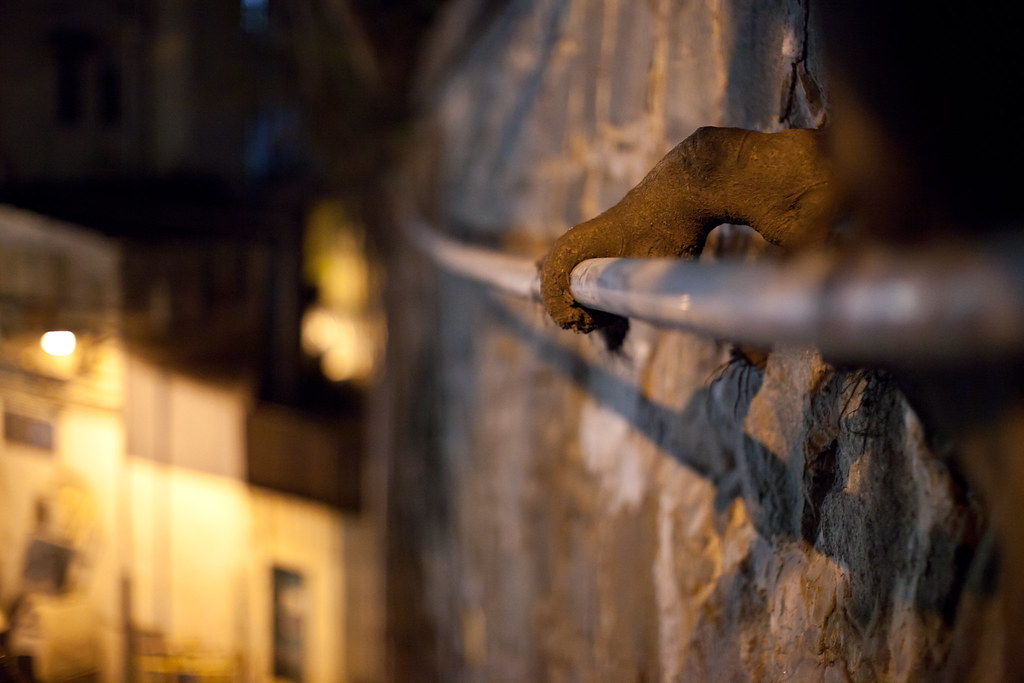
1/50s, f/1.2, ISO 3200, 50mm
Here's a night shot from the Soho neighborhood in Hong Kong. A few weeks ago, I noticed this tree growing out of a steep slope and became fascinated by how one of the roots had grabbed unto a a pipe running underneath its trunk. It was very dark, so I shot the photo at ISO 3200 with the lens wide open at f/1.2.
Sparks (火花)

1/200s, f/2.0, ISO 200, 135 mm
Shooting with fast primes is a lot of fun. For this shot, I used Canon's 135mm f/2.0 lens with the lens wide open. The image quality is just superb and the auto-focus is fast and accurate. And it's great to have a medium telephoto lens that's fairly light-weight and inconspicuous for street photography. I used a fairly long shutter speed (1/200), so that the sparks would form light lines rather that just appear like tiny dots.
To Crop or Not to Crop
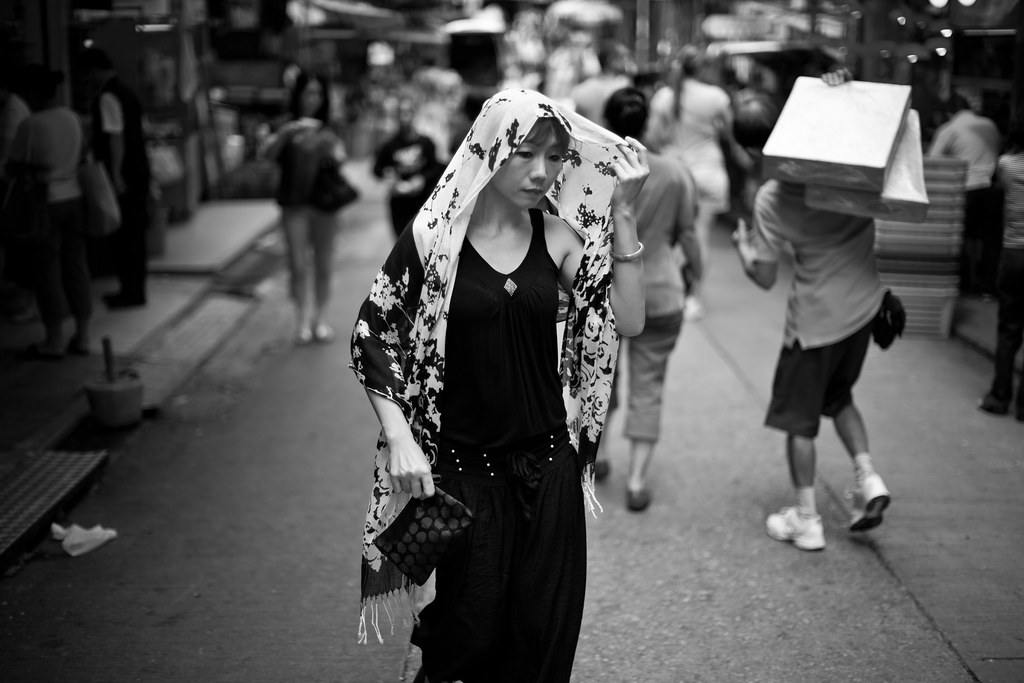
1/1250s, f/1.2, ISO 100, 50mm
To crop or not to crop: I took this picture a few weeks ago and initially decided to crop it and move the subject to the right of the frame. I try not crop my images excessively but in this case I felt that the surroundings didn't add much. And cropping seemed a way to bring the viewer closer to the woman in front. But when I came across the orignal image yesterday, I realized that I made a mistake. While there's not much going on around the woman, the surroundings provide more context and reveals more of the street's grit. The cropped image is below the fold. What do you think?

1/1250s, f/1.2, ISO 100, 50mm
Sunday Afternoon
Around Hollywood Road (荷李活道)

4s, f/13.0, ISO 400, 14 mm
In Hong Kong, I live in the neighborhood of Soho, short for south of Hollywood Street. The neighborhood is on a dramatic hillside and is home to some truly great streets. It's also an area frequented by expats. There are lots of western restaurants and bars around and a number of fancy condo buildings and serviced apartments. But unlike other parts of Hong Kong, it's also an incredibly diverse neighborhood. Just down from Hollywood Road, there is a vibrant meats and vegetable market. Locals live, work, and shop here and walking these colorful streets is a nice contrast to the sterile, mega malls in Central (Hong Kong Island's downtown, of sorts). I like the that fact that the neighborhood gives me a chance to interact with some people I would rarely encounter if I lived in a true expat enclave--even if that interaction is pretty limited (I'm embarrassed to say that I'm still struggling with the handful of Cantonese phrases I've try to teach myself).
Having such a colorful neighborhood at my doorstep is, of course, a treat for a photographer. And there is no shortage of great street scenes to photograph. Many of the vendors are not keen to be photographed, and I generally respect that or ask before I shoot if someone seems uncomfortable. On the other hand, street photography is about capturing the life on the street as it happens rather than a staged version of it. So unless someone affirmatively makes clear they don't want to get photographed, I simply take my presence and raised camera as sufficient notice.
Included in this post are some recent shots from around Hollywood Road. They are taken with a number of different lenses, including the Canon 14mm f/2.8 L lens. I few weeks ago, I rented this super wide angle lens, which provides more than 110 degree field of view. The extreme wide-angle made for a bit of a learning curve but once I got the hang of it, it was a very useful lens for pulling in a lot of street life.
Continue below the fold for more shots.
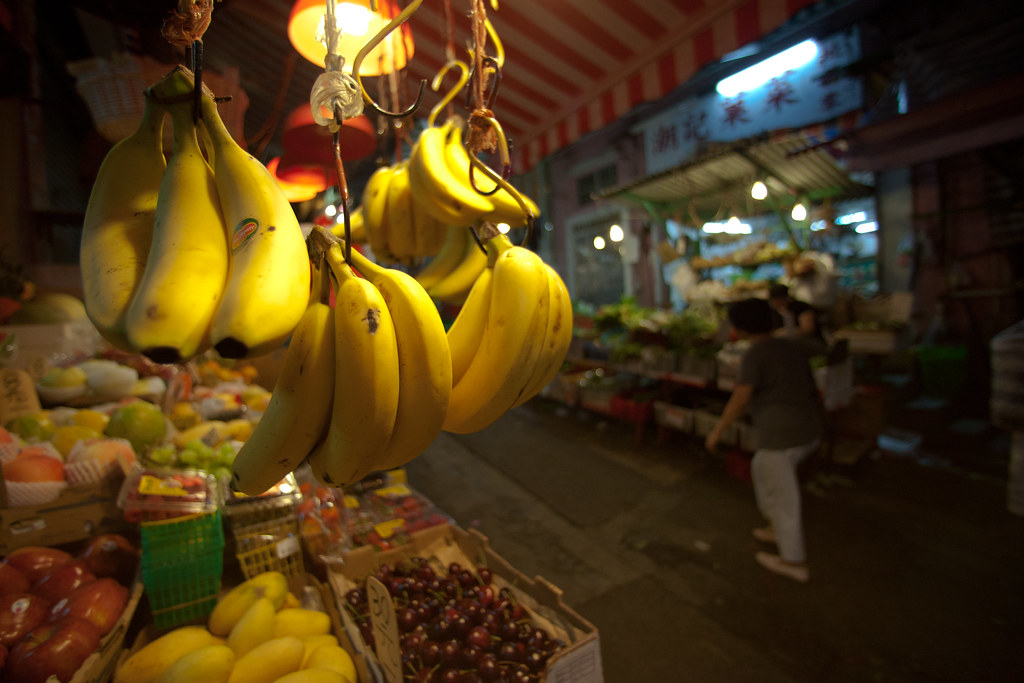
1/125s, f/2.8, ISO 1600, 14mm

1/200s, f/6.3, ISO 1600, 50mm
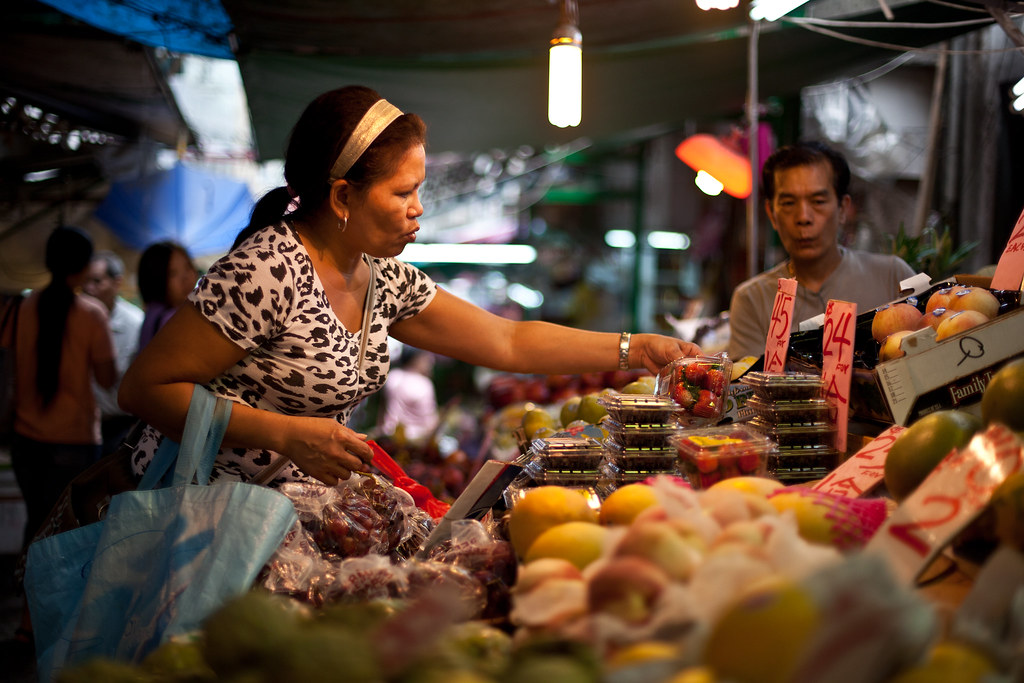
1/1000s, f/1.6, ISO 400, 50mm
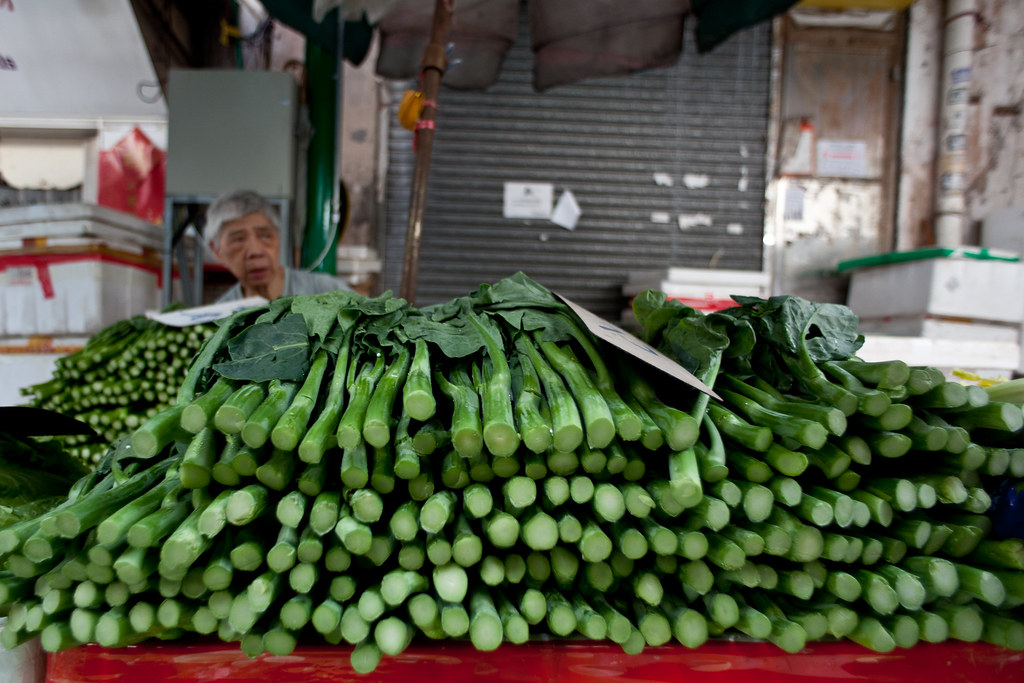
1/125s, f/2.8, ISO 400, 14mm

1/125s, f/2.8, ISO 1600, 14mm

1/1250s, f/1.4, ISO 400, 50mm
Legacy Lens on GF1 (Canon 50mm FD f/1.4)

I've been looking to experiment with legacy lenses for my GF1, micro four thirds (MFT) camera . The other day I came across a fairly cheap Canon FD 50mm f/1.4. It was about USD 100 and brand new (used copies are as low as 60 if you can find them). I picked up an FD to MFT converter and I was ready to go.
The lens is a lot of fun. The 50mm focal length on an MFT camera's cropped sensor is the equivalent of a 100mm lens on a full frame camera. And the wide f/1.4 aperture opens up some interesting opportunities, provides beautiful bokeh, and is very handy in low-light.
There are some drawbacks. Focusing is a challenge. Any legacy lens will not be able to auto-focus on an MFT camera body and focusing on the LCD screen can be cumbersome and is likely to be inaccurate (especially if the subject is moving). Most MFT cameras offer a magnified focus assist mode (on the GF1 you press the click wheel to enable it), but it doesn't exactly allow for very snappy focusing. An electronic viewfinder would probably be helpful (and save some battery power too), so maybe I will try to get my hands on one.
The photo above was shot at f/1.4 at 1/800 with an ISO of 800 (a bit high but I had forgotten to change it after walking outside). The lens does appear to be a bit soft wide open and there's definitely some chromatic aberration.
Continue below the fold for a another shot.
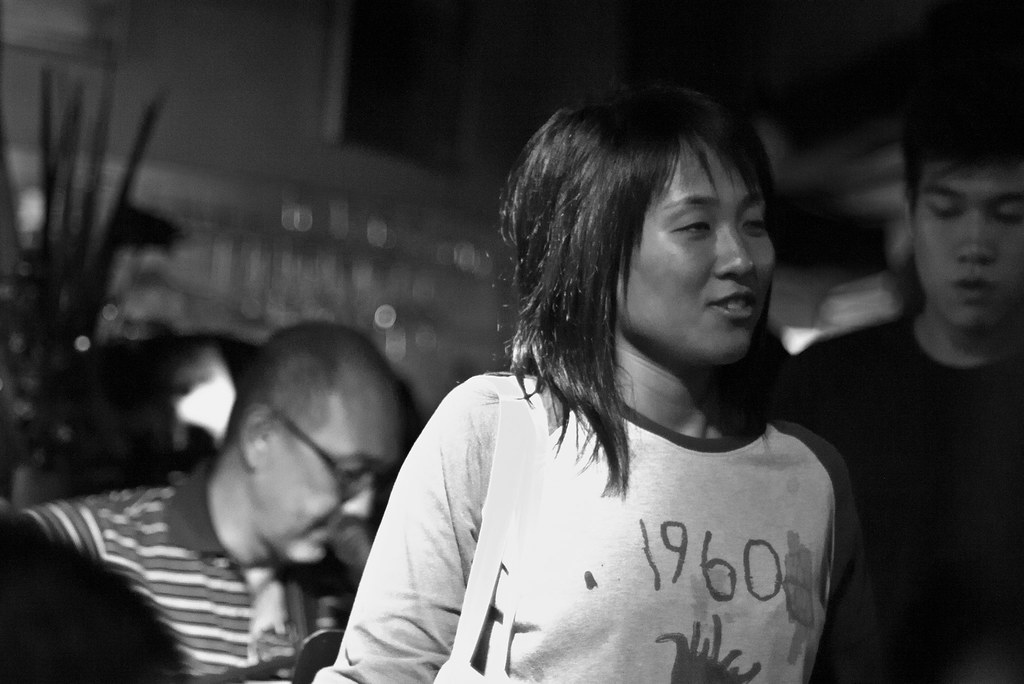
This photo was also shot wide open at f/1.4 with an ISO of 800. The exposure time was 1/60 seconds. The light in the bar was very dim.
